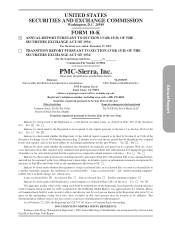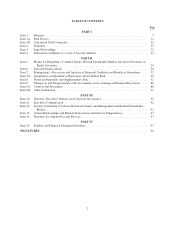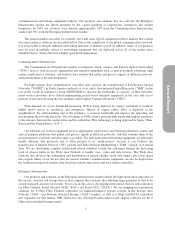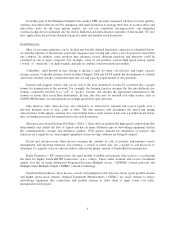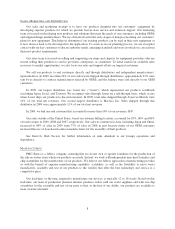Adaptec 2009 Annual Report Download - page 10
Download and view the complete annual report
Please find page 10 of the 2009 Adaptec annual report below. You can navigate through the pages in the report by either clicking on the pages listed below, or by using the keyword search tool below to find specific information within the annual report.
At the end of fiscal 2009, we had design centers in the United States (California, Pennsylvania and
Minnesota), Canada (British Columbia and Quebec), Israel (Herzliya), China (Shanghai) and India (Bangalore).
Our research and development spending was $149.2 million in 2009, $157.6 million in 2008 and $159.1
million in 2007.
B
ACKLOG
Our sales originate from customer purchase orders. However, our customers frequently revise order
quantities and shipment schedules to reflect changes in their requirements. As of December 27, 2009, our
backlog of products scheduled for shipment within three months totaled approximately $126.9 million (2008—
$68.0 million). Unless our customers cancel or defer to a subsequent year a portion of this backlog, we expect
this entire backlog to be filled in 2010.
Our backlog includes our backlog of shipments to direct customers, minor distributors and a portion of
shipments by our major distributor to end customers. Our customers may cancel or defer backlog orders.
Accordingly, we believe that our backlog at any given time is not a meaningful indicator of future long-term
revenues. Backlog is a non-GAAP measure and may not be comparable between companies.
C
OMPETITION
We typically face competition at the customer design stage when our customers are determining which
semiconductor components to use in their equipment designs.
Most of our customers choose a particular semiconductor component primarily based on whether the
component:
• meets the functional requirements;
• interfaces easily with other components in the product;
• meets power usage requirements;
• is priced competitively; and
• is commercially available on a timely basis.
OEMs are becoming more price conscious as semiconductors sourced from third party suppliers start to
comprise a larger portion of the total materials cost in OEM equipment. This price sensitivity from our customers
can lead to aggressive price competition by competing suppliers that may force us to decrease our prices to win a
design and therefore decrease our gross profit.
OEMs also consider the quality of the supplier when determining which component to include in a design.
Many of our customers will consider the breadth and depth of the supplier’s technology, as using one supplier for
a broad range of technologies can often simplify and accelerate the design of next generation equipment. OEMs
will also consider a supplier’s design execution reputation, as many OEMs design their next generation
equipment concurrently with the semiconductor component design. OEMs also consider whether a supplier has
been pre-qualified, as this ensures that components made by that supplier will meet the OEM’s quality standards.
We compete against established peer-group semiconductor companies that focus on the communications
and storage semiconductor business. These companies include the following: Altera Corp.; Applied Micro
Circuits Corp.; Broadcom Corp.; Cortina Systems, Inc.; Emulex Corp.; Exar Corp.; Infineon Technologies AG;
10

